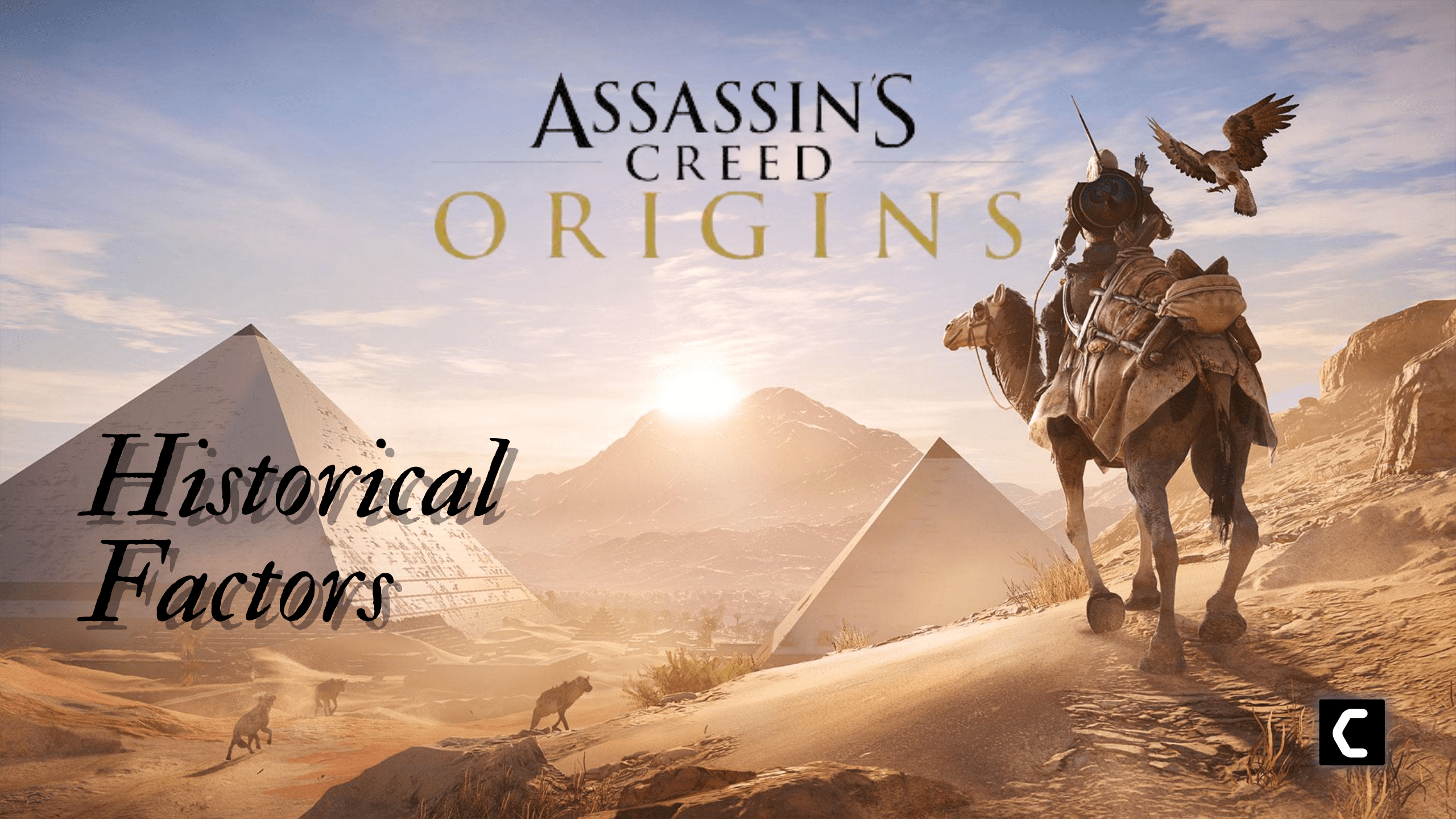Assassin’s Creed Origins offers a historical adventure by allowing players to explore ancient Egypt. But how historically accurate is it exactly?
Assassin’s Creed is well known for being the history teacher of gamers worldwide. What’s better than learning history by experiencing it yourself, right?
Yet again, Ubisoft is here to present realistic gameplay by setting the Assassin’s Creed Origin in 49 to 43 BC.
The game features some legendary names like Julius Caesar and Cleopatra. The game also features well-known historical places of ancient Egypt, like the Pyramids of Giza, the Oasis of Faiyum, and Alexandria.
But is the game set according to the original chains of events? And how historically accurate is it?
In this article, we will compare the relevancy of Assassin’s Creed Origins with actual history to see the accurate and inaccurate factors of the game’s plot.
5 Historically Accurate Factors of Assassin’s Creed Origins
The developers of AC Origins worked hard with actual historians to bring their players as realistic as possible experience, just like their game in the rest of the series. These efforts of Ubisoft Montreal have brought us to the following factors, which are historically correct in AC Origins.
1. Ruined Buildings
Assassin’s Creed fans found it astonishing yet concerning to see the cracks and gaps between the buildings. Players thought these gaps should’ve not been there as the structure would have been new and uncracked at those times. However, these cracks and gaps from 48 BC are historically correct.
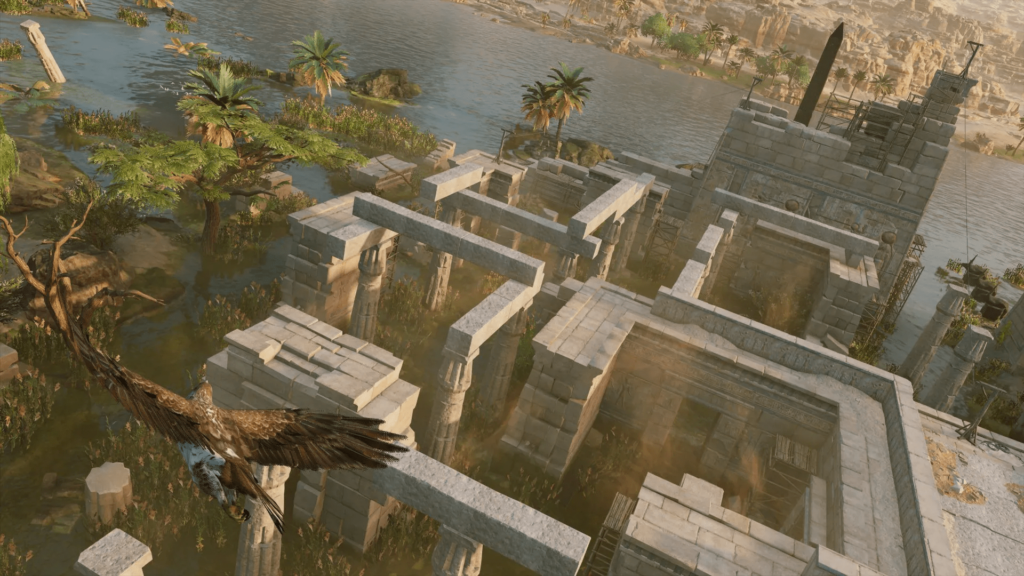
Considering various fields and retreats of Egyptian history, the Egyptians abandoned many buildings and areas. The era was driven by the politicians, which involved shifting residences in different towns due to the focus and attention of the enemy nations on more prominent cities. Hence popularity and money shifted accordingly.
2. Ancient Architecture
In Assassin’s Creed Origins, the Egyptian and Greek building’s architecture is historically accurate, and some of the civilization proofs can still be found. From the high palaces made out of marble to the mud and bricks, houses seem accurate according to the historians of Egypt.

The Greek cities in the AC Origins are found to be well-preserved for the wealthy people, which shows the costly craftsmanship of its structure. The Egyptian houses were displayed to be single-story houses. In contrast, the riches of Greek had buildings with multiple stories with various features.
3. Sculptures and Statues
The artistic value shown through sculptures and statues is probably the most accurate factor in Assassin’s Creed Origins. The sculptures found in the museum these days have identical accuracy and relevancy to the sculptures in the game.
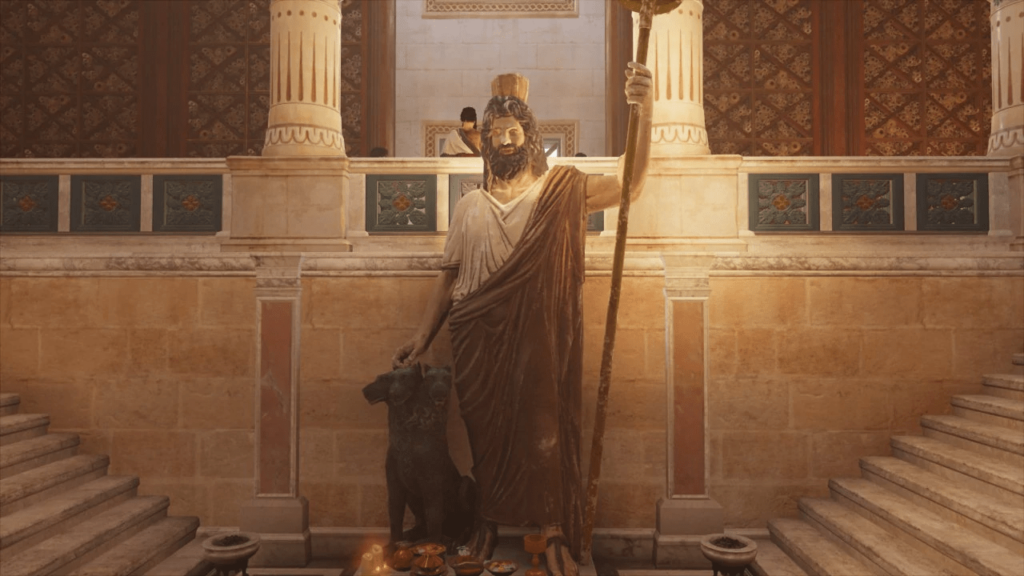
You can find direct real-life-based statues in the game at Serapeum of Alexandria. To add another interesting fact to history, the statues in the game are painted with colored clothing and realistic skin tone shades. With time, these colors may have faded, leaving a single-colored statue in real life due to aging.
4. Clothing/Attire
The clothing in Assassin’s Creed Origins is highly focused on being accurate from the attire of 48 BC. Now, if you’re wondering if Bayak’s outfit was precise historically too? Well, perhaps not. But when it comes to clothes worn by NPCs, the historical accuracy is 100%.

The divided clothing can be seen in Egyptians as the linen can be produced in different qualities. It can be produced from flax for a low-quality sack or sheer linen robes worn by the higher class. The concept of wearing shoes was there but not necessary, as many NPCs and the main character can be seen barefoot.
As far as accessories like hats and jewelry are concerned, brimmed-straw hats are historically accurate and could’ve been introduced by the Greeks in Egypt.
5. Religious Aspect
The religious factor is something that can get controversial in many cases. However, when it comes to Assassin’s Creed Origins, Ubisoft took its time to explore beliefs and religious practices followed between 49 to 43 BC.

At various places in the AC Origins, you may come across side quests, where you have to find the priests who performed responsibilities as administrators and civil mediators.
The Egyptian beliefs and religious practices were highlighted as well in AC Origins. Cats were sacred creatures for the Egyptians of 48 BC, and you can see the artifacts of cats for sale at the religious sites in the game.
5 Historically Inaccurate Factors of Assassin’s Creed Origins
Even though developers took their history lessons on Egypt to make Assassin’s Creed Origins, there were some historically incorrect factors in the game to make things more interesting for players. So beware, as this information might break your heart if you’re a fan of AC Origins.
1. Armored Soldiers
If you’ve reached the city of Alexandria, you may have seen the Greek soldiers wearing armored helmets or large iron cuirasses. You can find the royal guards in purple robes wearing Corinthian helmets, which does not align with the history of Egypt in 48 BC.
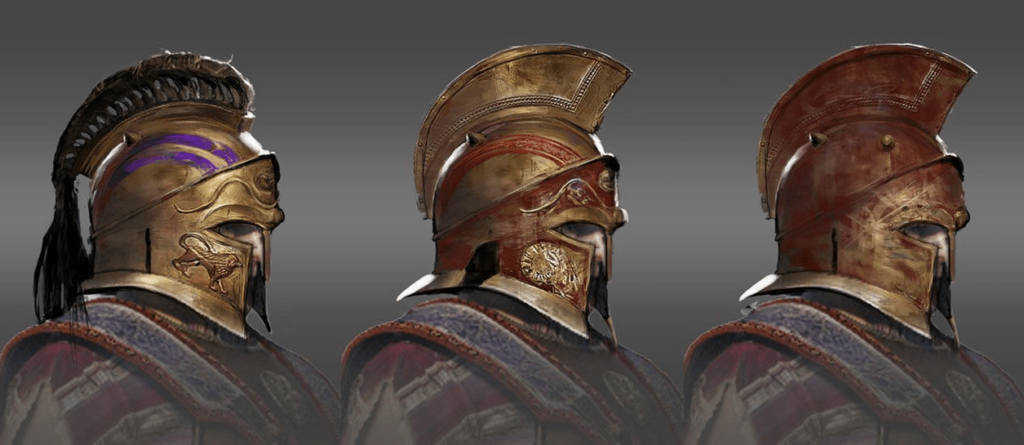
This defensive armory of soldiers is historically incorrect, as wearing these helmets in the scorching heat of Egypt could’ve been nearly impossible. This inaccuracy is true for only some of the armored helmets. On the other hand, the majority of armored helmets follow the traditional style, which seems pretty accurate.
2. Bloody Battles
This might seem the most inaccurate and heartbreaking news for AC origins fans, as the bloody battles in the game’s side quests did not exist in the Egyptian times from 49 to 43 BC. The death battles were only reserved for Rome.

Greek and Egyptians were more interested in less bloody sports like javelin throwing and archery. The same concept of the Olympics is derived from the athletic displays of the ancient Greeks.
The prevailing myths lead developers and designers to include bloody battles in the game to make it more interesting from the aspect of combat as an assassin.
3. Racial Differences
You may have observed the Assassin’s Creed Origins, separated by the Greeks and Egyptians. At many stages, the game has shown racial tensions between both races, which is not so accurate if we look at the history of Egypt from ancient times. Many Greek citizens were known to choose Egyptian names for their children.
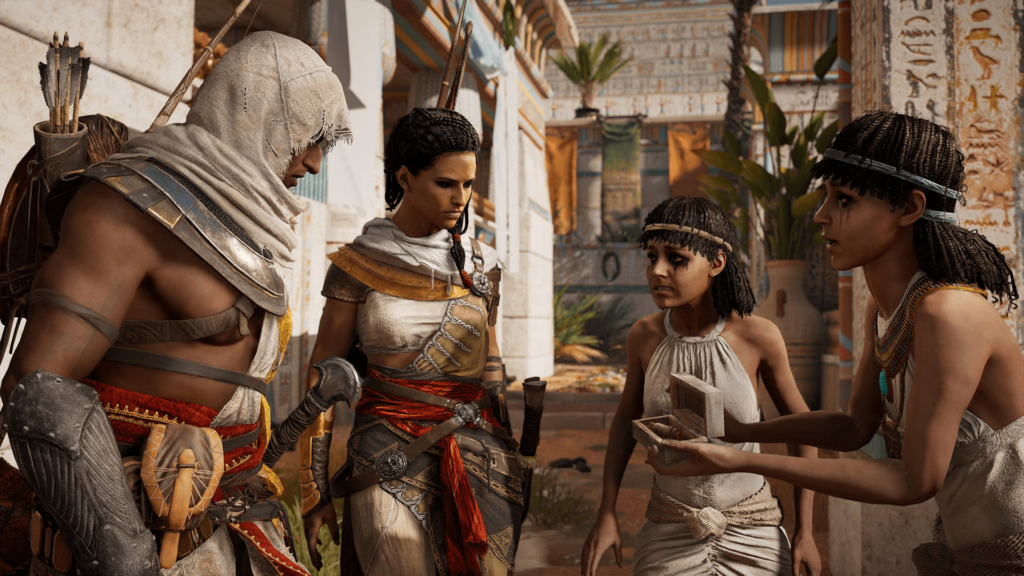
Although there were some ethnic disagreements between the nations but not something extreme like killing or hunting the races. On the other hand, Egyptians were fond of using Greek products, including household items and attire.
The same concept is wrong for authority in the AC Origins. The Greeks decorated farmers, and many Egyptians ruled over them while having superior authority.
4. Weapons
Another unrealistic but not-so-surprising factor is the weapons in Assassin’s Creed Origins. It’s a complicated factor as many weapons in the game have their complete historical background.
Therefore, not all, but most weapons in AC Origins are not according to history. The historically inaccurate weapons list includes.
- Warrior Bows with fire.
- Bows that fire multiple arrows.
- Heavy blades, taller than a man’s height.
- Weapons decorated with gold and jewels.

All these weapons were not present in the reality of Ancient Egypt, but they were purposely added in the game to give things relevancy with assassins. Many fans showed the same concern about weapon class when Ubisoft announced Assassin’s Creed Mirage in September 2022.
5. Cleopatra’s Character
Probably the most exaggerated concept in Assassin’s Creed Origins is the perception of Queen Cleopatra. The game portrays an idea in a cut-scene that Cleopatra would sleep with any man she wishes to do so, which is highly inaccurate according to the actual history.
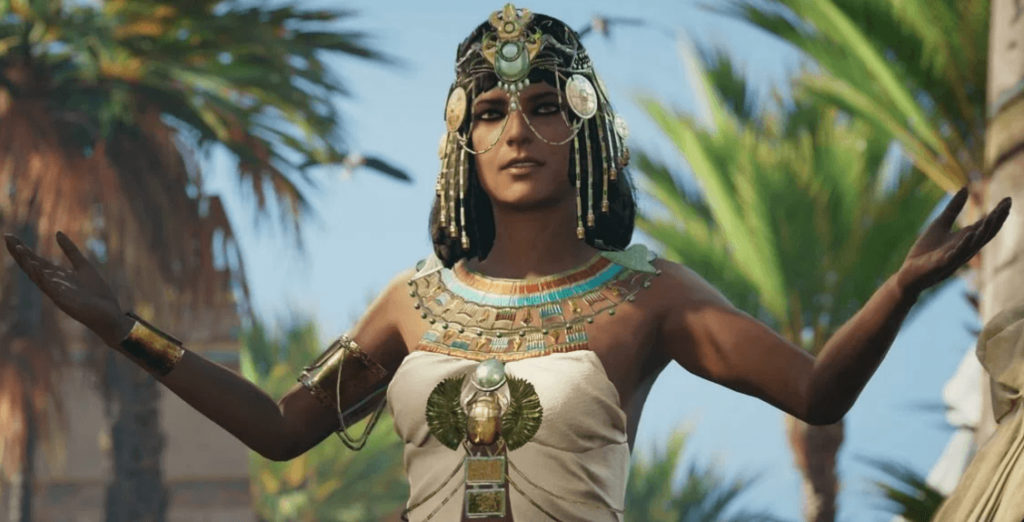
Queen Cleopatra was very much reserved for her personal life involving relationships. Like any other royalty, Cleopatra had boundaries regarding opening up about her personal life in front of her followers.
Historians believe that Cleopatra’s concept of attaining power by promiscuity was just a myth spread by Julius Caesar as a political move.
Conclusion
Assassin’s Creed franchise is always expected to offer its players an action-packed history lesson with extensive knowledge and information. Like reading can become boring, the same boredom can happen if you accurately follow the history presented in books.
Therefore, adding a little touch of side quest to enhance the gaming experience won’t do any disrespect to the original history, just like Assassin’s Creed Origins.
Hopefully, this article was informational yet interesting for you to read and explore the relevancy of AC Origins with the actual history.

